
Wine Culture and Information since 2002 - Volume 22
 Wine Culture and Information since 2002 - Volume 22 |
|
Issue 54, Summer 2007 |
Contents |
|
|
DiWineTaste: an Evolving Project |
|
The first issue of DiWineTaste was published in September 2002, almost five years ago. That first issue, which, as a matter of fact, was referred to October 2002, marked the beginning of our editorial adventure, an idea which was born at the end of 2000 and which was realized at the end of the spring of 2002. Officially, the publication of that first issue of DiWineTaste also determined the publication of our internet site, which was exactly published at 10:10PM of September 9th, 2002. Since that day DiWineTaste has walked a long way, an evolving path during which to the original editorial project have been added other services and goals. DiWineTaste begins its adventure with the PDF edition only - by claiming in this sense its e-magazine nature - to which was added, in September 2003, the HTML edition which can be directly read from the site. In September 2003 also took place the first substantial change with the publication of the new internet site and new interactive services. Among the many services offered to our readers, one of the most appreciated ones on a daily basis certainly is Wine Guide - also available from mobile phones - receiving over 3500 consultations a day. Another service being very appreciated by our readers is EnoGames, with over 1500 daily players. The last service offered to our readers - in order of time - is the Alcohol Test which in less than a month received a high appreciation and use from our readers, in particular from mobile phones and mobile devices connected to the internet. Moreover, one of the most recent successes and which rewarded our efforts, was the reaching of one hundred thousand monthly readers, a result repeated - and improved - also in the months of April and May, hopefully getting better and better in the next months. Reaching one hundred thousand monthly readers is a goal we were waiting for a long time and for which we worked hard, being aware of the fact it is just a new starting point and which can be improved. In these five years of editorial activity we did not worked on our publication only. Our editorial project has always been joined by a parallel activity of enogastronomical education and spreading, such as classes about sensorial tasting of wine, food and distillates, as well as events dedicated to wine and enogastronomy, very appreciated by our readers. One of the main activities has always been about wine reviews, something existing since the beginning of our project and which continues to represent - after five years - an important aspect. In the course of these five years we tasted more than 2300 wines of more than 440 producers. On June 2004 we began to be involved in critical review of distillates - therefore starting the Aquavitae Guide - which now counts more than 150 distillates of more than 50 producers. Just like the Wine Guide, also Aquavitae is very appreciated by our readers, also by means of its use from mobile phones and mobile devices. The appreciation and the encouragement for the job done in these five years has been witnessed by the many letters we received from our readers of the world, of course also criticizing and suggesting new ideas in order to improve the quality of our services and of our publication. Today, after five years, we believe it is the right time to further develop our project, by also dedicating our efforts to other activities as well as to the ones we are doing already. The results obtained so far encourage us to dedicate our efforts also to the educational side of wine culture, by strengthening our offers about wine courses and events. We also believe we have to make our activity of wine reviewing more effective, by also providing our readers a more punctual and frequent information, instead of the current monthly periodicity. In order to do this, new changes will be introduced, both to the magazine as well as to the contents offered through our site. The magazine will continue to be published, of course, however it will change both its aspect and contents. The most evident change on the magazine will be the reduction of articles - but not of columns, which will be alternated in the course of the publications - and will change in every issue according to the editorial plans. The tasting activity of wines sent by producers is something done all month long and, you already know this, every tasted wine is added to the Guide, whereas a selection of the best products of every producer is published in the “Wines of the Month” column. In this sense, we want to offer our readers a more punctual information, by publishing every week in the home page the reviews of wines evaluated in the last tasting sessions, while in the “Wines of the Month” column will be published the best wines according to our tasting committee. As of September 2007, our readers will find these new changes - although the magazine changes from this issue on - hopefully offering a better and more punctual information to our readers about our wine review activity. Besides all that and according to our intention of improving our educational activity, we are also planning new editorial projects, while continuing to have the goal of offering to our readers and to all wine, distillate and food lovers, a better service and the chance to know in a more “direct” and practical way. In these five years we have always considered DiWineTaste an evolving project, aware of the fact everything can be improved, including our job and our contribution. Our activity - as usual - will be proposed and told through the pages of our site. Also the home page will change in order to give our readers both the usual summary of the magazine as well as the activities taking place and proposed to our readers and to all wine lovers. It will be a new step - which will follow all the ones done so far - and that, we are sure of this, will take us to new steps and to new ways the future will tell us.
|
||||
Comparing Aglianico del VultureThe extraordinary grape of South Italy has in the Vulture area, in Basilicata region, one of its best expressions, capable of making complex and robust wines |
|
Aglianico is one of the most interesting grapes of Italy - not only of South Italy - capable of making wine of great value as well as with rich and complex organoleptic qualities. Thanks to its characteristics, wines produced with Aglianico are capable of long aging times in bottle, period during which the wine develops complexity and elegance. Despite Aglianico is today considered an autochthonous grape of Italy and almost exclusively found in every region of the South, indeed, its origin is Greek, belonging to the group of the many grapes introduced by ancient Greeks in past times. The name itself directly associates it to Greece. Aglianico is in fact the corruption of the the term Hellenic, an adjective used to refer to anything coming from Greece, in particular ancient Greece. Aglianico is today one of the indisputable protagonists of Italian enology, one of the best expressions of wines produced in South Italy. Aglianico is today mainly found in five regions - Basilicata, Campania, Apulia, Calabria and Molise - where it is used for the production of many Denominazione d'Origine Controllata wines. Among them, Basilicata and Campania certainly are the regions in which Aglianico plays a role of absolute importance and where, as a matter of fact, represents the most important red berried grape. The best wines produced with Aglianico are from grapes harvested in vineyards cultivated in volcanic soils, such as the ones found in the two areas considered as the best expressions for this grape: Vulture in Basilicata and Taurasi in Campania. Grape rich is polyphenolic substances, Aglianico makes wine of remarkable body, during youth can also be perceived an evident crispness and a rich concentration of aromas and flavors. Thanks to the high content in tannins and a good acidity, wines produced with Aglianico can also be aged for many years in bottle, therefore developing with time very complex organoleptic qualities and a better balance thanks to the diminished astringency of tannins.
|
|
Aglianico del Vulture is a wine with many aspects, with an interesting versatility most of the times expressed by pretty robust structures. Just like every other wine, wine making and viticultural practices used for the production of wines from Aglianico are important for quality and organoleptic characteristics. In the vast scenery of the production of this wine, there are in fact many expressions of Aglianico del Vulture, from average bodied wines and pretty “ordinary” organoleptic qualities, to full and robust bodied wines characterized by rich and complex organoleptic qualities. Thanks to its characteristics, Aglianico del Vulture is a wine which can be aged in bottle for many years, period during which will undergo a remarkable organoleptic evolution, tannins get rounder, therefore reaching an excellent balance. According to the production disciplinary, Aglianico del Vulture must age for at least 12 months in cask before being commercialized.
The goal of our comparative tasting is the study of Aglianico del Vulture's organoleptic qualities and the influence of the aging in cask according to the periods used by every producer. Production styles adopted by each producer will also allow the comparison of the many structures, while confirming the excellent versatility of Aglianico. The first wine selected for our comparative tasting is D'Angelo's Aglianico del Vulture Donato d'Angelo, aged for 18 months in barrique and for 8 months in bottle. The second wine is Paternoster's Aglianico del Vulture Don Anselmo, of which half ages in cask and the other half in barrique. The third wine of our comparative tasting is Aglianico del Vulture La Firma, produced by Cantine del Notaio, aged for 12 months in cask and for 4 months in bottle. The three wines will be served at a temperature of 18° C (65° F) and for the tasting we will use - as usual - three ISO glasses.
|
||||||||
|
Aglianico is a grape with a high content in coloring substances and polyphenols, therefore - in quality viticultural conditions - its wines will be characterized by very intense colors and pretty low transparencies, sometimes impenetrable to light. In young Aglianico del Vulture wines, will be observed intense and brilliant ruby red colors, with a pretty low transparency, a color which will be also observed in the nuances, although it is not rare to see evident purple red nuances. Thanks to its high content in polyphenols, Aglianico del Vulture is a wine which can age in bottle for many years - even more than ten years - period during which, something we can certainly expect, will be observed changes in the appearance. Aglianico del Vulture can sometimes keep its ruby red color for many years, whereas the evolution of nuances will be quicker and after some years will be possible to see a garnet red color. The first wine of which we will examine appearance is D'Angelo's Aglianico del Vulture Donato d'Angelo. By holding the glass tilted over a white surface - while making sure about a correct lighting - we will observe the base of the glass. The color of this first wine is brilliant ruby red, with a pretty low transparency, a typical quality in Aglianico del Vulture. The nuance of this wine - observed at the edge of the liquid mass towards the opening of the glass - is garnet red. Let's now pass to the evaluation of the second wine: Paternoster's Aglianico del Vulture Don Anselmo. By holding the glass tilted, we will observe a deep ruby red color and, also in this case, a pretty low transparency. The nuance of this wine is ruby red. Also the color of the last wine - Aglianico del Vulture La Firma produced by Cantine del Notaio - will confirm the qualities observed in the two previous wines. The color of this third wine is in fact intense ruby red with a pretty low transparency and nuances of the same color.
|
|
Aglianico is a grape rich in aromas, a quality which is also found in young wines. The aromatic qualities of Aglianico mainly recall flowers and red and black berried fruits, which develop, with times, rich and complex characteristics. Thanks to its high content in polyphenols, wines produced with Aglianico are particularly suited for the aging in cask, a practice that - besides making the wine more round and elegant - also gives tertiary aromas, therefore enriching its organoleptic profile. Among the most frequent fruit aromas of Aglianico del Vulture are found black cherry, blueberry, plum, raspberry, cherry and blackberry, whereas the aromas of strawberry and black currant are less frequent. Among flower aromas, the most frequent one is violet, rarely, cyclamen. With the aging in cask Aglianico del Vulture mainly develops spicy aromas of vanilla, licorice, black pepper and cinnamon to which are added balsamic aromas of menthol and eucalyptus. With aging, this wine also develops aromas of cocoa, chocolate, carob and tobacco. We will begin our olfactory evaluation from D'Angelo's Aglianico del Vulture Donato d'Angelo. By holding the glass in vertical position and without swirling, we will proceed with the analysis of opening aromas, made of the substances requiring a low quantity of oxygen in order to volatilize. During the first smell will be perceived aromas of black cherry, blueberry and plum, a characteristic opening of Aglianico del Vulture, in particular the aromas of black cherry and plum. We will now proceed with the swirling of the glass, in order to favor the volatilization of other aromas, the ones made of “heavier” aromatic substances requiring a higher quantity of oxygen in order to be revealed. The second smell will raise from the glass aromas of violet - the most characteristic flowery aroma in Aglianico del Vulture - followed by vanilla, licorice, eucalyptus, cocoa and pink pepper. It should be noticed the balanced impact of wood in this wine - 18 months in barrique - and its contribution in spicy aromas of vanilla and the balsamic hint of eucalyptus. Let's now proceed with the second wine of our comparative tasting: Paternoster's Aglianico del Vulture Don Anselmo, aged both in cask and in barrique. By holding the glass in vertical position and without swirling, the first smell will allow the perception of opening aromas of black cherry, plum and violet, a typical opening. The second smell, after having swirled the glass, will complete the aromatic profile with blueberry, violet, carob and chocolate, followed by pleasing spicy aromas of vanilla, black pepper and clover. Let's now pass to the olfactory evaluation of the third wine of our comparative tasting: Aglianico del Vulture La Firma produced by Cantine del Notaio, aged for 12 months in cask. Opening aromas reveal blackberry, black cherry and plum, not very different from previous wines and typical for this wine. After having swirled the glass, we will proceed with the second smell which will complete the aromatic sequence with violet, black currant, vanilla, tobacco, licorice, carob, black pepper, mace and menthol. It should be noticed in all the three wines the influence of the type of wood and the period of aging.
|
||||
|
The gustatory impact of Aglianico del Vulture is an experience which does not go unnoticed. Thanks to the characteristics of Aglianico grape, in these wines will be perceived a robust structure - mainly determined by the content in tannins - and a pretty high alcohol by volume, also for balancing the effect of polyphenolic substances. The average alcohol by volume of Aglianico del Vulture is in fact of 13.5%, sometimes also reaching 14.5%. The structure of Aglianico del Vulture is also strengthened by the aging in cask, as well as in barrique, which according to the production disciplinary must be at least of 12 months. The aging in cask - and therefore the effect of oxygen - will allow Aglianico del Vulture's tannins to develop, therefore losing their characteristic astringency, while making the wine rounder and more elegant, although keeping a remarkable structure. Taste-olfactory persistence of Aglianico del Vulture is generally very good, a characteristic which is also determined by the procedures of wine making. Let's begin the gustatory evaluation from D'Angelo's Aglianico del Vulture Donato d'Angelo. At the first sip, this wine proves its strength, with a tannic attack - a quality typical in wines produced with Aglianico - however it should be noticed the role played by the alcohol on balance. Despite the quantity of polyphenols, this wine is however round and with ripe and pleasing tannins. Let's now pass to the second wine: Paternoster's Aglianico del Vulture Don Anselmo. Also the attack of this second wine is tannic, however very balanced, also thanks to the presence of alcohol, that in this Aglianico is 13.5%. The attack of the last wine - Aglianico del Vulture La Firma produced by Cantine del Notaio - confirms the nature of this famous wine from Basilicata: tannic and strong, with a robust structure well balanced by alcohol, that in this case is of 14.5%. It should be noticed in all the three wines the excellent correspondence to the nose, in particular with the aromas of plum and black cherry, and it should also be noticed the role of wood in each wine according to the type and the duration of aging.
|
|
As usual, the final part of the tasting is about the evaluation of taste-olfactory persistence and the sensations left in the mouth after having swallowed the sample. The finish of D'Angelo's Aglianico del Vulture Donato d'Angelo is persistent with flavors of black cherry, plum and blueberry: a very typical finish of Aglianico. Also the finish of Paternoster's Aglianico del Vulture Don Anselmo is persistent, leaving in the mouth pleasing flavors of black cherry, plum and blueberry, just like the previous wine. The finish of the third wine - Aglianico del Vulture La Firma produced by Cantine del Notaio - is persistent with long flavors of black cherry and plum, to which is also added - as opposed to the previous wines - a pleasing flavors of blackberry. It should be noticed in all the three wines the robust structure perceived in the mouth also after having swallowed the samples and the excellent correspondence to the nose.
|
Wines of the Month |
|
|
|
Score legend Prices are to be considered as indicative. Prices may vary according to the country or the shop where wines are bought |
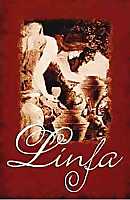
|
|
Linfa 2002 |
|
| Bosco Nestore (Abruzzo, Italy) | |
| Grapes: Montepulciano d'Abruzzo (60%), Cabernet Sauvignon (40%) | |
| Price: € 12.00 | Score: |
| This wine shows a brilliant ruby red color and nuances of garnet red, little transparency. The nose denotes intense, clean, pleasing and refined aromas that start with hints of plum jam and black cherry jam followed by aromas of blueberry jam, dried violet, vanilla, tobacco, mace, chocolate and licorice. The mouth has good correspondence to the nose, a tannic attack and pleasing roundness, however balanced by alcohol, good body, intense flavors. The finish is persistent with flavors of plum jam and black cherry jam. Linfa ages for 12 months in barrique followed by 12 months of aging in bottle. | |
| Food Match: Broiled meat and barbecue, Stewed meat with mushrooms | |

|
|
Montepulciano d'Abruzzo Don Bosco 2002 |
|
| Bosco Nestore (Abruzzo, Italy) | |
| Grapes: Montepulciano d'Abruzzo (60%), Cabernet-Sauvignon (40%) | |
| Price: € 15.00 | Score: |
| This Montepulciano d'Abruzzo shows an intense ruby red color and nuances of ruby red, little transparency. The nose reveals intense, clean, pleasing and refined aromas which start with hints of black cherry, plum and blackberry followed by aromas of violet, vanilla, blueberry, raspberry, carob, cinnamon and leather. The mouth has good correspondence to the nose, a tannic attack and however balanced by alcohol, good body, intense flavors. The finish is persistent with flavors of black cherry, plum and blueberry. Montepulciano d'Abruzzo Don Bosco ages for 12 months in cask followed by 18-14 months of aging in bottle. | |
| Food Match: Roasted meat, Braised and stewed meat with mushrooms, Hard cheese | |
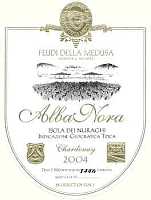
|
|
Alba Nora 2004 |
|
| Feudi della Medusa (Sardinia, Italy) | |
| Grapes: Chardonnay | |
| Price: € 22.00 | Score: |
| Alba Nora shows an intense golden yellow color and nuances of golden yellow, very transparent. The nose reveals intense, clean, pleasing and refined aromas that start with hints of banana, acacia and vanilla followed by aromas of apple, hazelnut, pineapple, praline, plum, grapefruit and pear. The mouth has good correspondence to the nose, a crisp attack and however balanced by alcohol, good body, intense flavors, pleasing roundness. The finish is persistent with flavors of banana, hazelnut and plum. Alba Nora ages for 9 months in barrique. | |
| Food Match: Stuffed pasta, Roasted fish, Roasted white meat, Mushrooms soups | |
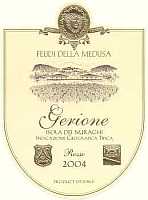
|
|
Gerione 2004 |
|
| Feudi della Medusa (Sardinia, Italy) | |
| Grapes: Bovale (35%), Cabernet Sauvignon (30%), Syrah (25%), Cabernet Franc (10%) | |
| Price: € 42.00 | Score: |
| Gerione shows an intense ruby red color and nuances of ruby red, little transparency. The nose reveals intense, clean, pleasing and refined aromas that start with hints of black cherry, black currant and plum followed by aromas of bell pepper, vanilla, tobacco, blueberry, graphite, mace, chocolate and menthol. The mouth has good correspondence to the nose, a tannic attack and however balanced by alcohol, good body, intense flavors, pleasing roundness. The finish is persistent with flavors of plum, black cherry and black currant. Gerione ages for 18 months in barrique. | |
| Food Match: Roasted meat, Braised and stewed meat with mushrooms, Hard cheese | |
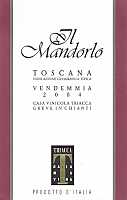
|
|
Il Mandorlo 2004 |
|
| Triacca (Tuscany, Italy) | |
| Grapes: Cabernet Sauvignon (70%), Sangiovese (30%) | |
| Price: € 11.00 | Score: |
| Il Mandorlo shows an intense ruby red color and nuances of ruby red, little transparency. The nose reveals intense, clean, pleasing and refined aromas which start with hints of black cherry, black currant and plum followed by aromas of vanilla, violet, pink pepper, blackberry, blueberry, licorice, tobacco, cocoa and menthol. The mouth has good correspondence to the nose, a tannic attack and however balanced by alcohol, full body, intense flavors. The finish is persistent with flavors of black cherry, black currant and plum. Il Mandorlo ages for 15 months in barrique. | |
| Food Match: Game, Roasted meat, Braised and stewed meat, Hard cheese | |
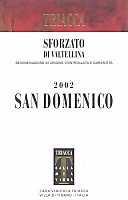
|
|
Sforzato di Valtellina San Domenico 2002 |
|
| Triacca (Lombardy, Italy) | |
| Grapes: Nebbiolo | |
| Price: € 23.00 | Score: |
| Sforzato di Valtellina San Domenico shows an intense ruby red color and nuances of brick red, moderate transparency. The nose reveals intense, clean, pleasing, refined and elegant flavors which start with hints of cherry, plum and violet followed by aromas of blackberry, blueberry, raspberry, cyclamen, dried rose, vanilla, tobacco, chocolate, cinnamon, leather and menthol. The mouth has excellent correspondence to the nose, a tannic attack and pleasing crispness, however balanced by alcohol, full body, intense flavors, pleasing roundness. The finish is very persistent with long flavors of cherry, plum and blackberry. A very well made wine. Sforzato di Valtellina San Domenico is produced with grapes dried for three months and ages for 18 months in cask. | |
| Food Match: Game, Roasted meat, Braised and stewed meat, Hard cheese | |
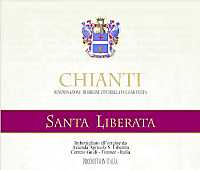
|
|
Chianti 2006 |
|
| Santa Liberata (Tuscany, Italy) | |
| Grapes: Sangiovese (90%), Canaiolo Nero (10%) | |
| Price: € 7.00 | Score: |
| This Chianti shows a brilliant ruby red color and ruby red nuances, moderate transparency. The nose denotes intense, clean and pleasing aromas that start with hints of black cherry, plum and raspberry followed by aromas of blueberry, violet and cinnamon. The mouth has good correspondence to the nose, a slightly tannic attack and pleasing crispness, however balanced by alcohol, good body, intense flavors. The finish is pretty persistent with flavors of black cherry and plum. This Chianti ages for 6 months in steel and cement vats. | |
| Food Match: Stuffed pasta, Sauteed meat | |
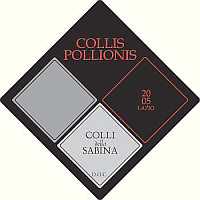
|
|
Collis Pollionis Rosso 2005 |
|
| Tenuta Santa Lucia (Latium, Italy) | |
| Grapes: Sangiovese (40%), Montepulciano (40%), Merlot (20%) | |
| Price: € 11.00 | Score: |
| This wine shows a brilliant ruby red color and nuances of ruby red, moderate transparency. The nose denotes intense, clean and pleasing aromas that start with hints of black cherry, plum and blueberry followed by aromas of black currant, violet and blackberry. The mouth has good correspondence to the nose, a tannic attack and however balanced by alcohol, good body, intense flavors. The finish is persistent with flavors of plum and black cherry. Collis Pollionis Rosso ages in steel tanks. | |
| Food Match: Stuffed pasta, Cold cuts, Stewed meat | |
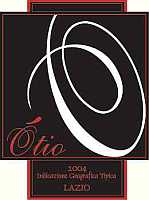
|
|
Otio 2004 |
|
| Tenuta Santa Lucia (Latium, Italy) | |
| Grapes: Cabernet Sauvignon (35%), Merlot (35%), Montepulciano (30%) | |
| Price: € 18.00 | Score: |
| Otio shows an intense ruby red color and nuances of garnet red, little transparency. The nose reveals intense, clean, pleasing and refined aromas that start with hints of black cherry, plum and violet followed by aromas of black currant, blueberry, vanilla, tobacco, licorice, chocolate, cinnamon and menthol. The mouth has good correspondence to the nose, a tannic attack and pleasing roundness, however balanced by alcohol, good body, intense flavors. The finish is persistent with flavors of plum and black cherry. Otio ages for 7 months in steel tanks followed by 9 months of aging in barrique. | |
| Food Match: Roasted meat, Braised and stewed meat with mushrooms, Hard cheese | |
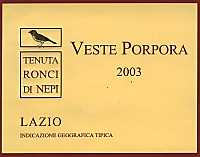
|
|
Veste Porpora 2005 |
|
| Tenuta Ronci di Nepi (Latium, Italy) | |
| Grapes: Sangiovese (50%), Cabernet Sauvignon (50%) | |
| Price: € 8.00 | Score: |
| Veste Porpora shows a brilliant ruby red color and nuances of ruby red, moderate transparency. The nose reveals intense, clean and pleasing aromas that start with hints of black cherry and plum followed by aromas of toasted wood, vanilla, blueberry, tobacco and carob. The mouth has good correspondence to the nose, a slightly tannic attack and however balanced by alcohol, good body, intense flavors. The finish is persistent with flavors of plum and black cherry. This wine ages for 18 months in cask and in barrique. | |
| Food Match: Roasted meat, Stewed meat | |
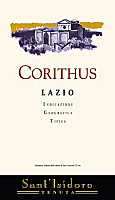
|
|
Corithus 2004 |
|
| Sant'Isidoro (Latium, Italy) | |
| Grapes: Sangiovese (50%), Montepulciano (30%), Merlot (20%) | |
| Price: € 10.00 | Score: |
| Corithus shows an intense ruby red color and nuances of ruby red, little transparency. The nose reveals intense, clean, pleasing and refined aromas which start with hints of black cherry, plum and violet followed by aromas of blueberry, vanilla, tobacco, rose, caper, chocolate and menthol. The mouth has good correspondence to the nose, a tannic attack and however balanced by alcohol, good body, intense flavors. The finish is persistent with flavors of plum and black cherry. Corithus ages for 6 months in barrique followed by 5 months of aging in bottle. | |
| Food Match: Roasted meat, Stewed and braised meat, Broiled meat and barbecue | |
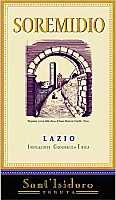
|
|
Soremidio 2003 |
|
| Sant'Isidoro (Latium, Italy) | |
| Grapes: Montepulciano | |
| Price: € 18.00 | Score: |
| Soremidio shows an intense ruby red color and nuances of ruby red, little transparency. The nose reveals intense, clean, pleasing and refined aromas that start with hints of black cherry, plum and blackberry followed by aromas of blueberry, violet, vanilla, tobacco, cocoa and cinnamon. The mouth has good correspondence to the nose, a tannic attack and however balanced by alcohol, good body, intense flavors, pleasing roundness. The finish is persistent with flavors of black cherry and plum. Soremidio ages for 12 months in barrique followed by 6 months of aging in bottle. | |
| Food Match: Roasted meat, Stewed and braised meat, Hard cheese | |
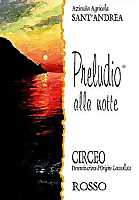
|
|
Circeo Rosso Preludio della Notte 2005 |
|
| Sant'Andrea (Latium, Italy) | |
| Grapes: Merlot (85%), Sangiovese (15%) | |
| Price: € 6.50 | Score: |
| Circeo Rosso Preludio della Notte shows an intense ruby red color and nuances of ruby red, little transparency. The nose reveals intense, clean and pleasing aromas that start with hints of black cherry, raspberry and cyclamen followed by aromas of blueberry and plum. The mouth has good correspondence to the nose, a slightly tannic attack and pleasing crispness, however balanced by alcohol, good body, intense flavors. The finish is pretty persistent with flavors of raspberry and blueberry. This wine ages for 3 months in steel tanks, 6 months in barrique and 3 months in bottle. | |
| Food Match: Broiled meat and barbecue, Roasted meat, Stewed meat | |
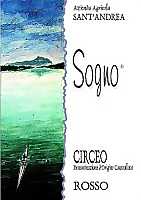
|
|
Circeo Rosso Sogno 2005 |
|
| Sant'Andrea (Latium, Italy) | |
| Grapes: Merlot (85%), Cesanese (15%) | |
| Price: € 10.00 | Score: |
| Circeo Rosso Sogno shows an intense ruby red color and nuances of ruby red, little transparency. The nose reveals intense, clean, pleasing and refined aromas which start with hints of black cherry and black currant followed by aromas of blueberry, plum, vanilla, carob and menthol. The mouth has good correspondence to the nose, a slightly tannic attack and however balanced by alcohol, good body, intense flavors, agreeable. The finish is persistent with flavors of plum and blueberry. Circeo Rosso Sogno ages for 3 months in steel tanks, 12 months in barrique and 3 months in bottle. | |
| Food Match: Roasted meat, Braised and stewed meat, Hard cheese | |

|
|
Cesanese del Piglio Colle Forma 2004 |
|
| Terenzi (Latium, Italy) | |
| Grapes: Cesanese d'Affile | |
| Price: € 8.00 | Score: |
| Cesanese del Piglio Colle Forma shows a brilliant ruby red color and nuances of garnet red, moderate transparency. The nose reveals intense, clean, pleasing and refined aromas that start with hints of black cherry, raspberry and cyclamen followed by aromas of blackberry, plum, violet, vanilla and carob. The mouth has good correspondence to the nose, a tannic attack and however balanced by alcohol, good body, intense flavors, pleasing roundness. The finish is persistent with flavors of black cherry, plum and raspberry. This wine ages for 10 months in steel tanks followed by 4 months of aging in barrique. | |
| Food Match: Broiled meat and barbecue, Roasted meat, Stewed meat | |
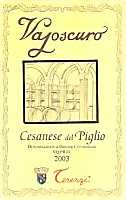
|
|
Cesanese del Piglio Vajoscuro 2003 |
|
| Terenzi (Latium, Italy) | |
| Grapes: Cesanese d'Affile | |
| Price: € 11.00 | Score: |
| This wine shows an intense ruby red color and nuances of garnet red, little transparency. The nose reveals intense, clean, pleasing and refined aromas that start with hints of plum, violet and black cherry followed by aromas of blueberry, vanilla, mace, tobacco, carob and cinnamon. The mouth has good correspondence to the nose, a tannic attack and however balanced by alcohol, good body, intense flavors, pleasing roundness. The finish is persistent with flavors of plum and black cherry. Cesanese del Piglio Vajoscuro ages for 10 months in cask followed by 9 months of aging in bottle. | |
| Food Match: Roasted meat, Stewed and braised meat, Hard cheese | |
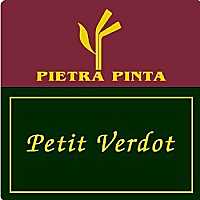
|
|
Petit Verdot 2005 |
|
| Pietra Pinta (Latium, Italy) | |
| Grapes: Petit Verdot | |
| Price: € 8.00 | Score: |
| This Petit Verdot shows an intense ruby red color and nuances of ruby red, little transparency. The nose denotes intense, clean and pleasing aromas which start with hints of black cherry, plum and blueberry followed by aromas of blackberry, raspberry and cyclamen. The mouth has good correspondence to the nose, a slightly tannic attack and pleasing crispness, however balanced by alcohol, good body, intense flavors. The finish is persistent with flavors of plum and blueberry. Part of this wine ages in barrique for 6 months. | |
| Food Match: Broiled meat and barbecue, Roasted meat, Stewed meat | |
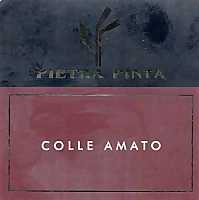
|
|
Colle Amato 2004 |
|
| Pietra Pinta (Latium, Italy) | |
| Grapes: Cabernet Sauvignon, Syrah | |
| Price: € 15.00 | Score: |
| Colle Amato shows an intense ruby red color and nuances of ruby red, little transparency. The nose reveals intense, clean, pleasing and refined aromas which start with hints of black cherry, raspberry and black currant followed by aromas of blueberry, plum, vanilla, bell pepper, cyclamen and carob. The mouth has good correspondence to the nose, a tannic attack and however balanced by alcohol, good body, intense flavors. The finish is persistent with flavors of black cherry and raspberry. Colle Amato ages for 12 months in barrique. | |
| Food Match: Roasted meat, Broiled meat and barbecue, Hard cheese | |
News |
|
In this section are published news and information about events concerning the world of wine and food. Whoever is interested in publishing this kind of information can send us a mail to our address.
|
AquavitaeReview of Grappa, Distillates and Brandy |
|
|
| Distillates are rated according to DiWineTaste's evaluation method. Please see score legend in the "Wines of the Month" section. |
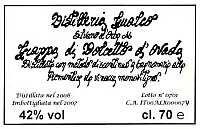
|
|
Grappa di Dolcetto d'Ovada 2006 |
|
| Distilleria Gualco (Piedmont, Italy) | |
| Raw matter: Pomace of Dolcetto di Ovada | |
| Price: € 19.50 - 70cl | Score: |
| This grappa is colorless, limpid and crystalline. The nose denotes intense, clean and pleasing aromas of black cherry, plum, raspberry and violet, with almost imperceptible alcohol pungency. In the mouth has intense flavors, with perceptible alcohol pungency which tends to dissolve rapidly, good correspondence to the nose, balanced sweetness, pleasing roundness. The finish is persistent with flavors of plum and raspberry. This grappa is distilled with a discontinuous bainmarie alembic still. Alcohol 42%. | |
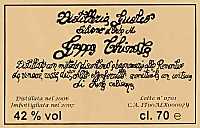
|
|
Grappa Chinata 2006 |
|
| Distilleria Gualco (Piedmont, Italy) | |
| Raw matter: Grappa of Dolcetto and Barbera, Cinchona Calysaia | |
| Price: € 22.50 - 70cl | Score: |
| This grappa shows a deep amber yellow color, limpid and crystalline. The nose denotes intense, clean and pleasing aromas of cinchona, chocolate, dried fig and honey, with almost imperceptible alcohol pungency. In the mouth has intense flavors, with perceptible alcohol pungency that tends to dissolve rapidly, good correspondence to the nose, pleasing bitter hint and roundness. The finish is persistent with flavors of cinchona. This grappa is distilled with a discontinuous bainmarie alembic still. Produced with the infusion of cinchona calysaia for some months. Alcohol 42%. | |
Wine Parade |
|
|
| The best 15 wines according to DiWineTaste's readers. To express your best three wines send us an E-mail or fill in the form available at our WEB site. |
| Rank | Wine, Producer | |
|---|---|---|
| 1 |
| Sagrantino di Montefalco Collepiano 2003, Arnaldo Caprai (Italy) |
| 2 |
| Soave Classico Monte Alto 2004, Ca' Rugate (Italy) |
| 3 |
| Amarone della Valpolicella Classico Costasera 2001, Masi (Italy) |
| 4 |
| Sforzato di Valtellina Canua 2001, Conti Sertoli Salis (Italy) |
| 5 |
| Don Antonio 2003, Morgante (Italy) |
| 6 |
| Barolo Cannubi Boschis 2001, Sandrone (Italy) |
| 7 |
| Nero al Tondo 2001, Ruffino (Italy) |
| 8 |
| Amarone della Valpolicella Classico 2000, Zenato (Italy) |
| 9 |
| Barolo Bussia 2001, Prunotto (Italy) |
| 10 |
| Mater Matuta 2003, Casale del Giglio (Italy) |
| 11 |
| Chianti Classico Riserva Novecento 2000, Dievole (Italy) |
| 12 |
| Collio Bianco Col Disôre 2004, Russiz Superiore (Italy) |
| 13 |
| San Leonardo 2001, Tenuta San Leonardo (Italy) |
| 14 |
| Wine Obsession 2001, Vignamaggio (Italy) |
| 15 |
| Bradisismo 2003, Inama (Italy) |
| |||||||
Privacy Policy | |||||||


| Copyright © 2002-2024 Antonello Biancalana, DiWineTaste - All rights reserved |
| All rights reserved under international copyright conventions. No part of this publication and of this WEB site may be
reproduced or utilized in any form or by any means, electronic or mechanical, without permission in writing from DiWineTaste. |